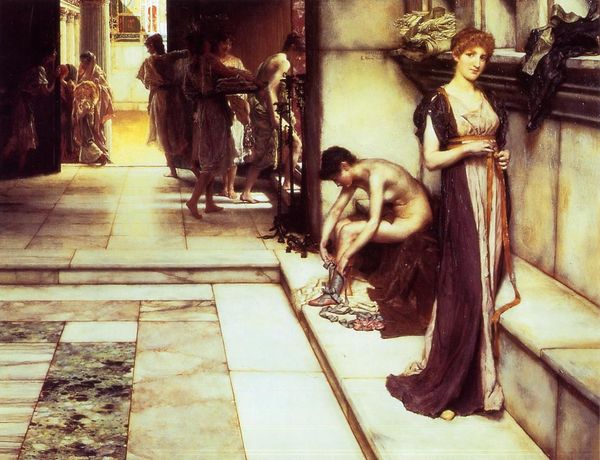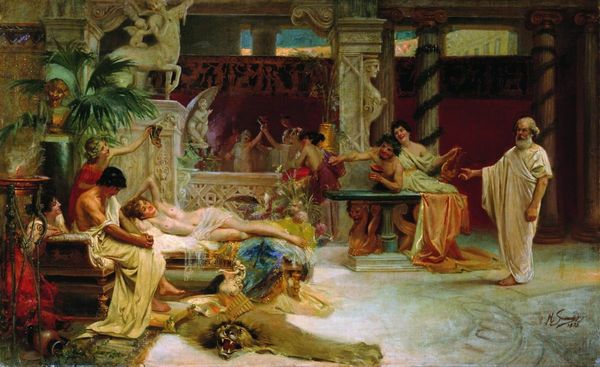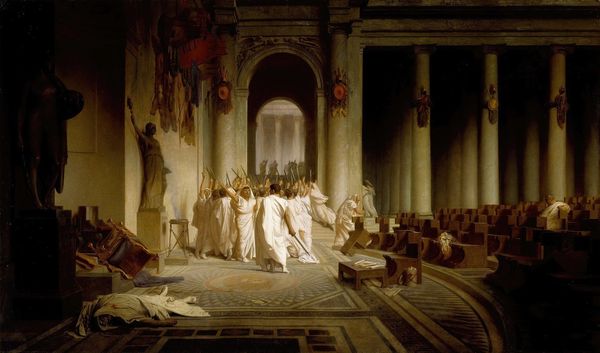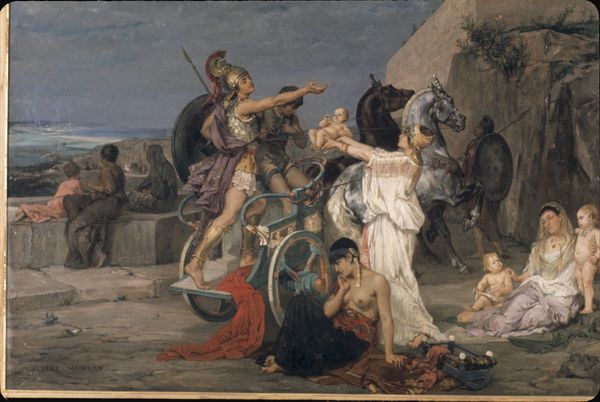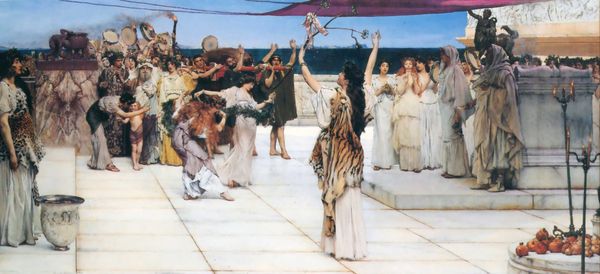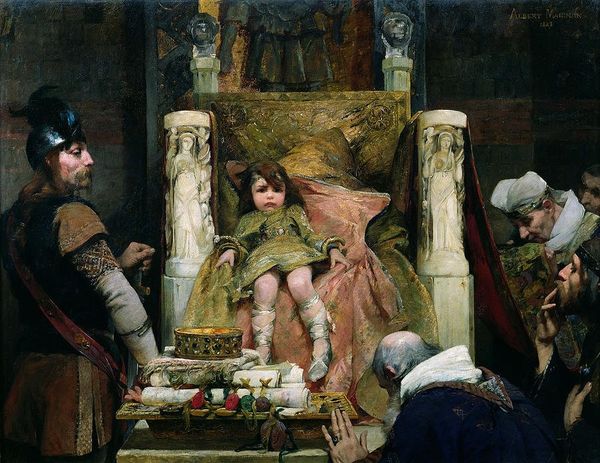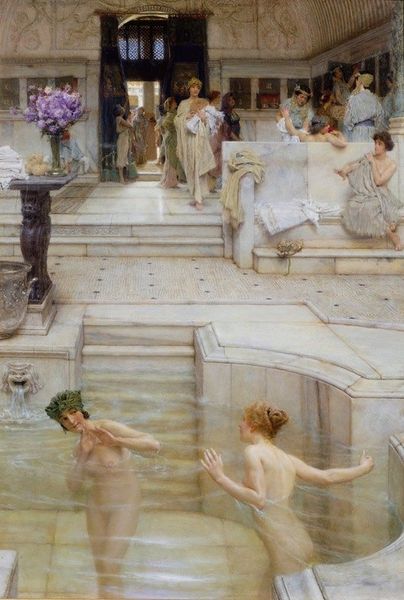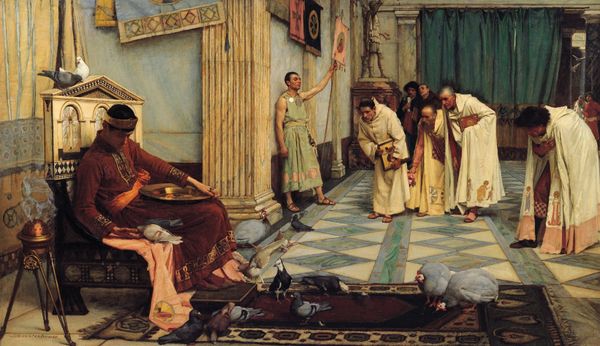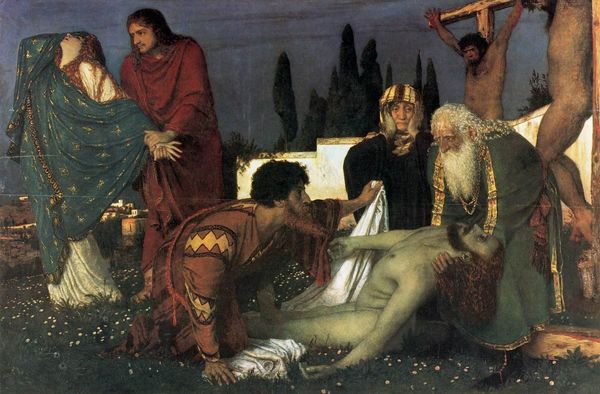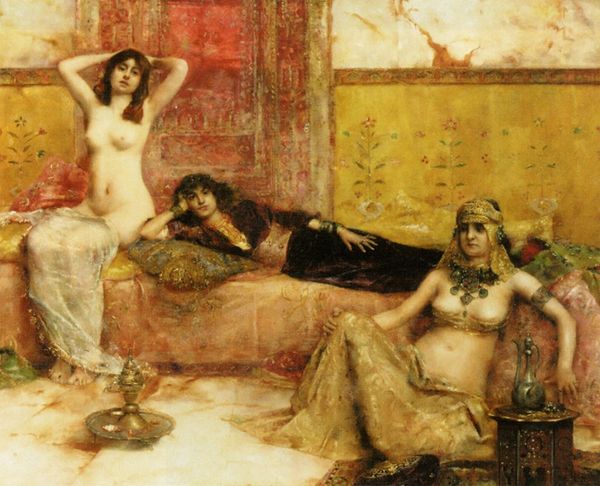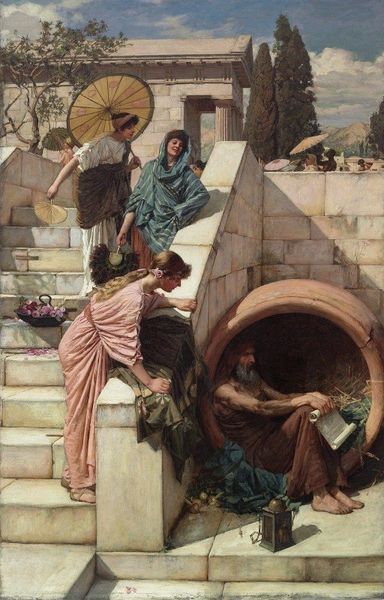
Copyright: Public Domain: Artvee
How can the meaning of a painting change over time? This is ‘The Women of Amphissa’, an oil painting created in 1887 by the Dutch-English artist Sir Lawrence Alma-Tadema (1836-1912). He trained at the Royal Academy of Antwerp before resettling in Victorian London – where he quickly became recognised for his decadent representations of classical subjects. ️ ‘The Women of Amphissa’ is directly inspired by a legend from ancient Greece. It depicts a group of women waking from their slumber in Amphissa, a Greek market town. These women are ‘maenads’ from the town of Phoics – followers of the Greek god Dionysus. Dionysus was the god of wine, ecstasy, and ritual madness. He was associated with freedom and immorality. Alma-Tadema has included many symbols of Dionysus throughout this painting. Can you spot grape leaves, ‘thyrsus’ (ivy-covered vine), and ‘nebris’ (fawn skin)? Here, the maenads appear dishevelled and bedraggled, suggesting that they fell asleep in the open air following a chaotic night. However, they have unwittingly entered the territory of Amphissa – the sworn enemy of their native town, Phoics. This painting depicts the moment that the women of Amphissa gather around the waking maenads to protect them from the men of the town. By guarding the maenads, the women of Amphissa rejected the political values of their town. This painting is now celebrated as a representation of sisterhood and empathy prevailing over hate and war. It’s a monumental work of academic history painting, measuring 121 by 182 centimetres. 🖼️ Today’s interpretation of this painting might not match what Alma-Tadema envisaged when he sat down to create ‘The Women of Amphissa’, but it just goes to show how art can be intensely personal. It means something slightly different to everyone who views it!
Comments
No comments
Be the first to comment and join the conversation on the ultimate creative platform.
